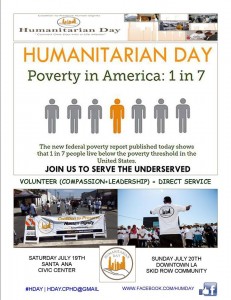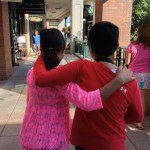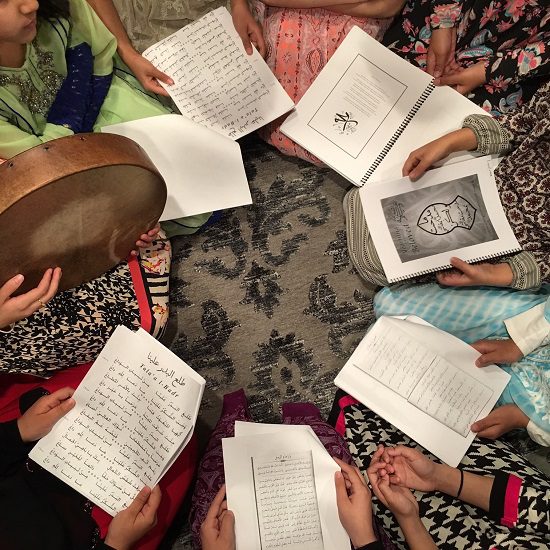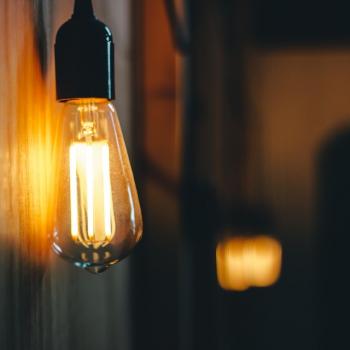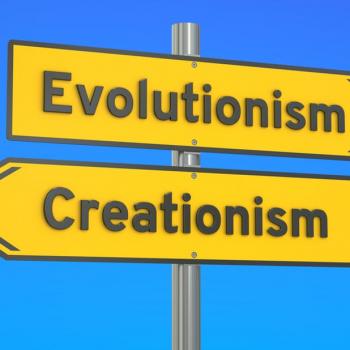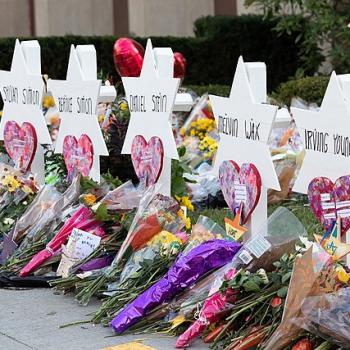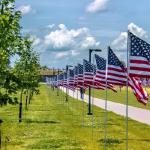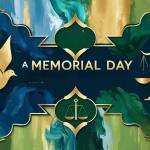This article comes on Day 24 of our special Altmuslim/Patheos Muslim Ramadan #30Days30Writers blog project, in which we are showcasing the voices of 30 Muslim leaders, activists, scholars, writers, youth and more (one on each day of Ramadan) as part of our commitment to own our own narratives and show how we are one Ummah, many voices. To demonstrate how our Ramadan experiences are shared yet unique to each of us.
PART ONE: A GLIMPSE OF BEFORE
It was nine days before the first of Ramadan 1277, or Tuesday, March 4, 1861, in the Gregorian calendar, Inauguration Day for Abraham Lincoln. Tension clung tightly to everything in Washington, like Spanish moss on Southern Live Oaks. Many did not think the 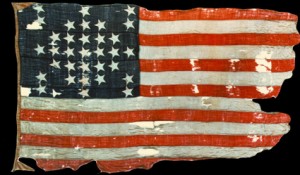 president-elect would make it through the day alive. After all, the newly created Confederate States of America had made absolutely clear its fierce resolve to protect the rights of slave states.
president-elect would make it through the day alive. After all, the newly created Confederate States of America had made absolutely clear its fierce resolve to protect the rights of slave states.
Lincoln, looking like a Colossus with a colossal weight on his shoulders, stood on the east portico steps of the U.S. Capitol and promised that he would do nothing to obstruct the institution of slavery.
“I believe I have no lawful right to do so, and I have no inclination to do so,” he proclaimed.
These inaugural address utterances scraped bloody raw the sensibilities of many abolitionists.
Frederick Douglass, full of despair for the “down-trodden” and “heart-broken” slaves, furiously wrote that Lincoln used his address to avow “himself ready to catch [the slaves] if they run away, to shoot them down if they rise against their oppressors, and to prohibit the Federal Government irrevocably from interfering for their deliverance.”
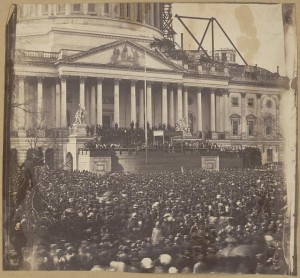 In a damning critique, newspaper editor Edmund Quincy, son of an erstwhile Harvard University president, accused the new commander in chief of giving his address “face turned toward the South and with both knees bowed down before the idol it worships.”
In a damning critique, newspaper editor Edmund Quincy, son of an erstwhile Harvard University president, accused the new commander in chief of giving his address “face turned toward the South and with both knees bowed down before the idol it worships.”
The idol, of course, being slavery.
South Carolina had seceded from the Union first, in December, just a little over a month after Lincoln won the presidency. Mississippi, Florida, Alabama, Georgia, and Louisiana had followed in tandem in January, and in that order. Texas had made its dramatic exit, alone, in February.
And now it was March, and one could only wonder if the temporarily dome-less lawmaking institution directly behind Lincoln, 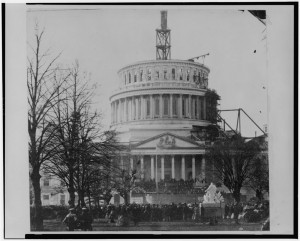 during his address, with its scaffolding and construction cranes still in plain view, towering against the sky, relayed a symbolic message to at least some in the crowd of 25,000 onlookers, a message that those with moral courage in the face of injustice could understand, a message about mindless behavior in matters of law and unfinished business on freedom.
during his address, with its scaffolding and construction cranes still in plain view, towering against the sky, relayed a symbolic message to at least some in the crowd of 25,000 onlookers, a message that those with moral courage in the face of injustice could understand, a message about mindless behavior in matters of law and unfinished business on freedom.
If visitors from the future had been there that day, well…they might have said that the message felt a lot like 2014 in some regards.
But symbolism is duplicitous.
One can never really know.
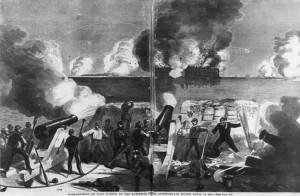 A little over a week later Ramadan began for observant Muslims among the slave population in the United States, and a day after it ended, around the time that those same African Muslims enslaved in America would have been rising for the dawn prayer, looking forward to celebrating the completion of the blessed month of daily fasting in any humble way they could, given their dire circumstances as captives, artillery shots rang out in South Carolina and did not stop for 34 hours straight. The Civil War had begun. The nation would never be the same.
A little over a week later Ramadan began for observant Muslims among the slave population in the United States, and a day after it ended, around the time that those same African Muslims enslaved in America would have been rising for the dawn prayer, looking forward to celebrating the completion of the blessed month of daily fasting in any humble way they could, given their dire circumstances as captives, artillery shots rang out in South Carolina and did not stop for 34 hours straight. The Civil War had begun. The nation would never be the same.
PART TWO: A LYRICAL SNIPPET OF AFTER
It is Ramadan 2014.
Beyond the to be expected photos of juicy, plump dates, hands arching toward them; parched people breaking fast, as the sun reclines in the West; and tightly formed lines of exhausted believers praying, shoulder-to-shoulder, toe-to-toe, a more richly-hued illustration of Ramadan-in-progress is going largely uncovered.
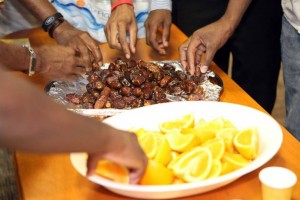
This boundless, behind the scenes portrait tells the story of what else Islam’s holiest month looks like this year for American Muslims.
And what else does it look like?
It looks, quite simply, like life, beauteous life in action, in all its ebbs and flows, in all of its vulnerability and strength, in all its sorrows and elation.
But what about the enslaved Africans who were the first Muslims to openly practice their faith on these shores, as far back as the American Civil War, as far back as the War of 1812, as far back as the American Revolutionary War, and even farther back than that?
Where are the diasporic progeny of these historic peoples?
How do they fit into this picture of American Muslims in Ramadan 2014?
The beautiful African diaspora among American Muslims are everywhere, moving about freely in this country.
Look around, look around, whoever you are, wherever you are.
They are diverse in Islamic schools of thought and understandings, backgrounds and political leanings, hopes and dreams.
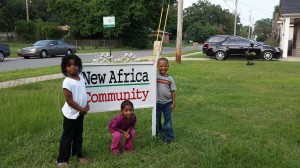
They self-identify in a number of ways: African and (or Black and) … American, Latino, Arab, Asian, etc. Some have no desire to add an “and” anywhere. Some proudly call themselves “New African.”
Indeed, they are a new people and a very old people, too, sharing in common an ancestral connection, through the diaspora, to the Africans forcefully brought to this land, and, by extension, to the Muslims who were among them.
Do you see them?
Look closely, look closely, whoever you are, from wherever you are.
You will find your own humanity reflected back, if you look closely.
We are one human family.
Let’s get to know each other better.
PART THREE: THE SPIRITUAL ADAM, RAMADAN 2014:
STILL HERE
“I’ve been scared and battered.
My hopes the wind done scattered.
Snow has friz me, Sun has baked me,
Looks like between ’em they done Tried to make me
Stop laughin’, stop lovin’, stop livin’–
But I don’t care! I’m still here!”
— Langston Hughes
California
Some served and protected their communities.
Their annual mission: Humanitarian Day. Their action: provide people in critical need with free health screenings and referral services, hygiene and back to school kits, food, blankets, new clothing, toys, specialty items, and much more. Their vision: “Convert One Day Into A Life Mission.”

Oklahoma and Michigan
Some—young and old, male and female, in the East, West, North, and South—reached across faiths and communities in joint efforts for peace and justice.
Here is a view from Oklahoma City and Detroit.
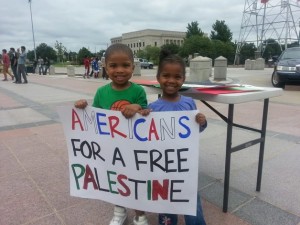
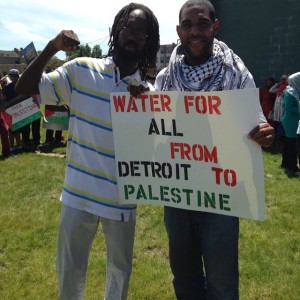
National
Some embarked on historic journeys.
One imam set out on a journey for education, a journey of 12, 000 miles, across 50 states! One of his stops included the Milwaukee Muslim Women’s Coalition.
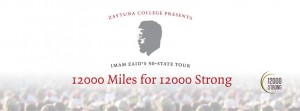
“Beginning this Ramadan, Imam Zaid Shakir will embark on a year-long journey, stopping at your mosques, schools, community centers, and homes across the United States, as part of an unprecedented effort: To enlist 12,000 believers to strengthen and sustain Zaytuna College with consistent monthly gifts.”
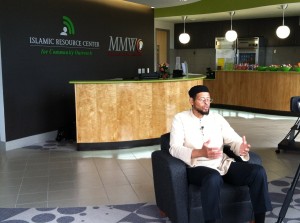
(Photo courtesy of the Milwaukee Muslim Women’s Coalition.)
New York
Some recycled their dollars within their communities, celebrating, with love and respect, the diverse cultures and ethnicities that are part of their diaspora.
Like these beautiful sisters—a scholar; a humanitarian; an artist,who designs with a purpose and conscience; and a living legend—did at the 43rd Annual International African Arts Festival.
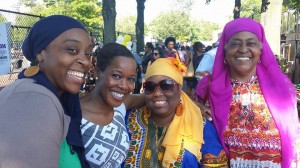
From left to right: Dr. Suad Abdul Khabeer (scholar), Saleemah Abdul-Ghafur (humanitarian, Director at African Leaders Malaria Alliance, New York), Anika Sabree (artist) and Sis. Amina Amatul-Haqq (mother of the scholar, living legend, former Black Panther, retired New York City Public School teacher, and community builder).
Some were generous with their hospitality, and that is a form of beautiful charity, too, especially in such a physically and spiritually challenging month!
This educator’s sister honored her with overwhelming hospitality in this blessed month—hospitality from one Muslim to another, from one sister to another, from one American to another, from one New Yorker to another.
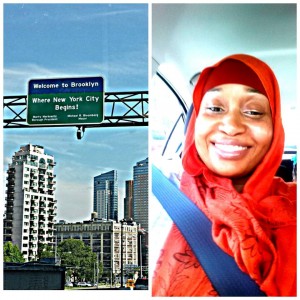
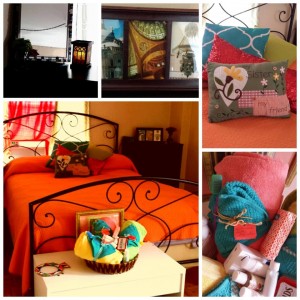
Illinois and Texas
Some brothers volunteered their time helping boys grow into exceptional young men, young men who will contribute tirelessly to humanity one day, Insha’Allah.
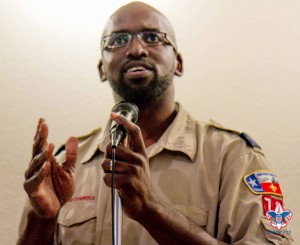
Some sisters never stopped loving and giving to their local communities, and they did it with a smile.
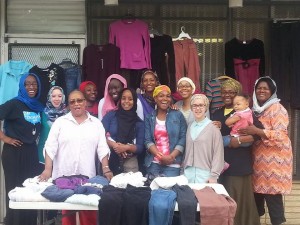
“Every Saturday, along with Bridging the Gap (webridgethegap.org), we give lunch to the community. However, during the winter community members in need asked for hats and coats. After a coat drive, we provided them and the response and gratitude was overwhelming! This continued and has evolved into a clothing giveaway, which is done alongside the food giveaway, each week during the month of Ramadan and every other week the rest of the year. All the donations from both programs come from the believers.”
(This photo includes members and friends of DePaul Umma, Chicago’s Masjid Al-Taqwa and Bridging the Gap)
Tennessee and Georgia
Some labored hard to nourish the mind and spirit.
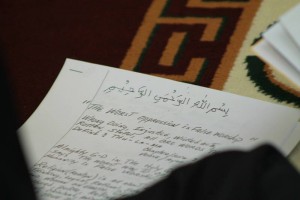
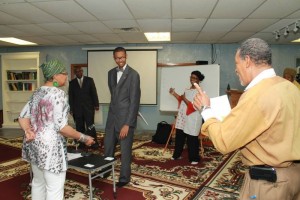
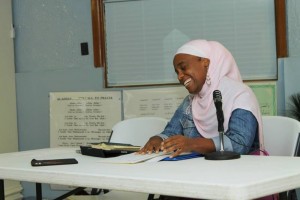
“If you don’t Expand when a burden is placed on you it will crush you. Allah gives us the power to Expand our mind with understanding.”
(Photo courtesy of April Abdul-BaaQee.)
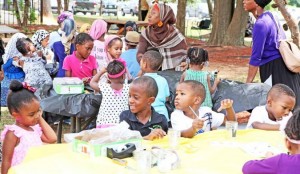
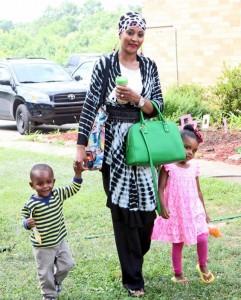
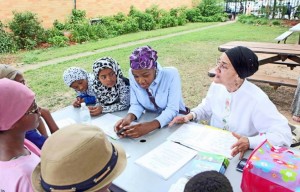

Maryland and Massachusetts
Some of the youth got more in touch with the beauty of nature and healthy living, fortunate for the loving support of their elders in these efforts.
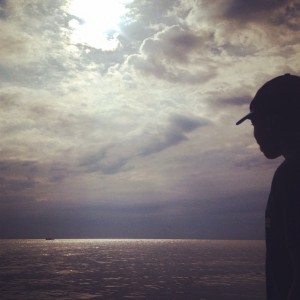
(Photo courtesy of Yaya Jata Fanusie.)
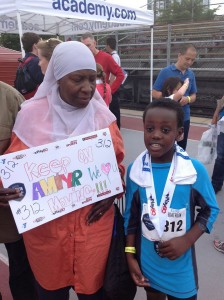
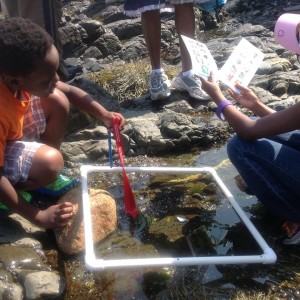
California
Some welcomed new souls into the this world, while bidding farewell to beloved old souls who passed on … “Allah giveth and Allah taketh away.”
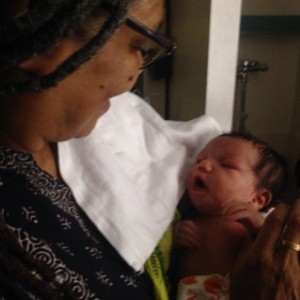
“Bashir Sage Muhsin-Hamilton: my fifth grandchild, was born at home, in northern California. It was my distinct pleasure to be there with his mom, my daughter, Sahar Muhsin. He arrived in the morning of July 6 (so, depending on your first day of the fast, it was Ramadan 8th), weighing 7 pounds, 11 ounces.
Two days later, my brother passed away.
Allah giveth and Allah taketh away.”
Washington, DC
Some spent days and nights planning and providing programs and services to improve the quality of life, and provide safe spaces, for those facing difficult health challenges.
RAHMA‘s (Rahma – Reaching All HIV+ Muslims In America) work in Ramadan is a beautiful example of this.
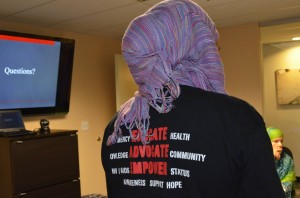

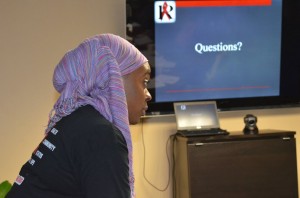
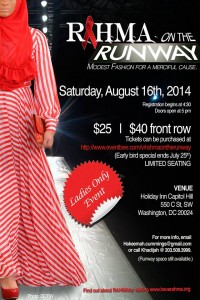
National
And there there were some who gave their all to preserve the history of the spiritual ADAM, so that it is not forgotten, so that it is not lost, so that others might learn about it in its proper context and benefit from the lessons it has to offer to humanity.
Dr. Jamillah’s Karim’s book Women of the Nation Between Black Protest and Sunni Islam and her article “Our legacy, too: Muslim women and the civil rights movement” are great examples of this. How fitting that they were both released in Ramadan!
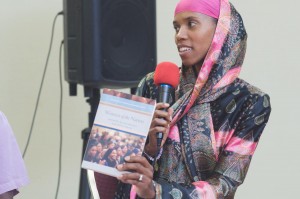
(Photo courtesy of Joi Faison, www.forthenur.com.)
This is not an exhaustive sampling, by far.
There are so many more diverse stories to to tell about the spiritual ADAM.
Get to it, scholars!
****
Credits:
*Photos of the Fort Sumter flag, the attack on Fort Sumter, Inauguration Day 1861, and the unfinished Capitol are courtesy of the Library of Congress.
**ADAM (African Diaspora American Muslims) is the name of a research project by Precious Rasheeda Muhammad.
***The Ramadan 2014 photos belong to the individual owners and may not be used, under any circumstances, without permission. The Library of Congress photos are in the public domain.
© Copyright Precious Rasheeda Muhammad

